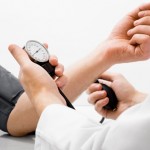Showing physicians EHR benefits may increase adoption rates
The use of electronic health records continues to grow year after year. Numerous programs have even been instituted that reward hospitals and practices for using EHRs. Massachusetts eHealth Institute sponsored the 2014 MeHI Provider and Consumer Health IT Research Study, which was conducted by the industry research firm Market Decisions LLC, and intended to provide an overview of the ways that health information technologies – such as EHRs – are used and perceived by consumers and health care providers across the state of Massachusetts. By making more physicians aware of the incentives involved with EHRs, adoption rates in the U.S. may increase even more.
The MeHI study found that 96 percent of Massachusetts's primary care practices utilize EHRs, while 86 percent of the state's specialists do as well. The study suggests that there needs to be more encouragement to develop more rapid deployment of EHRs in other health care sectors. Out of the state's behavioral health hospitals and skilled nurse facilities, only 55 percent use EHRs.
Providing incentive programs
EHR incentive programs can help these lacking sectors adopt the new technological practices. According to the Centers for Medicare and Medicaid Services, physicians with a minimum of 30 percent Medicaid patient volume are eligible to receive up to $63,750 over the course of six years. That could incentivize the purchasing of an EHR system, as this would cover a majority of the cost of implementing the system. A physician just needs to provide evidence that he or she adopted or upgraded their EHR software.
Patients support EHRs
Patients are more accepting of electronic health solutions than ever before in Massachusetts, according to the MeHI study. Out of the customers surveyed, 78 percent believe that EHR use improves health care when compared to paper-based systems. They are also less afraid of security concerns, as 85 percent of consumers are comfortable with EHRs storing their health information and 50 percent said they are very comfortable with the idea. Another incentive for physicians to use EHRs is that 48 percent of patients believe if their physician used an EHR system, then the care provided will greatly improve.
Using EHRs in unique ways
Hospitals in Texas utilize EHRs and team-based care to improve data analytics, according to HealthDataManagement.com. Every 24 hours the doctors receive updates on population health management statuses. They compile this data with practice guidelines to define the care given to Texas Children's Hospital patients. A patient with asthma received six dedicated plans from this new system.
Duke Medicine – comprised of Duke University School of Medicine, the Duke University School of Nursing and the Duke University Health System – pairs over 2 million patient EHRs with location intelligence from geographic information systems, according to Information Management. This big data system, called DEDUCE, allows physicians and clinicians to select, visualize and predictively study any type of patient in real-time.
"When we visually map a population and a health issue, we want to give an understanding about why something is happening in a neighborhood," Sohayla Pruitt, MS-GIS, a senior geospatial scientist at Duke, told Information Management. "Are there certain socioeconomic factors that are contributing? Do they not have access to certain things? Do they have too much access to certain things like fast food restaurants?"
With patient support and access to big data systems, health care is changing because of EHRs. The more doctors who become aware of this, the more likely they will be to accept this new form of data collection. The MeHI study suggests that physicians who do not adopt EHRs need better access to training and support for the use of the IT systems, or that they could be better informed of the benefits by EHR software providers.



